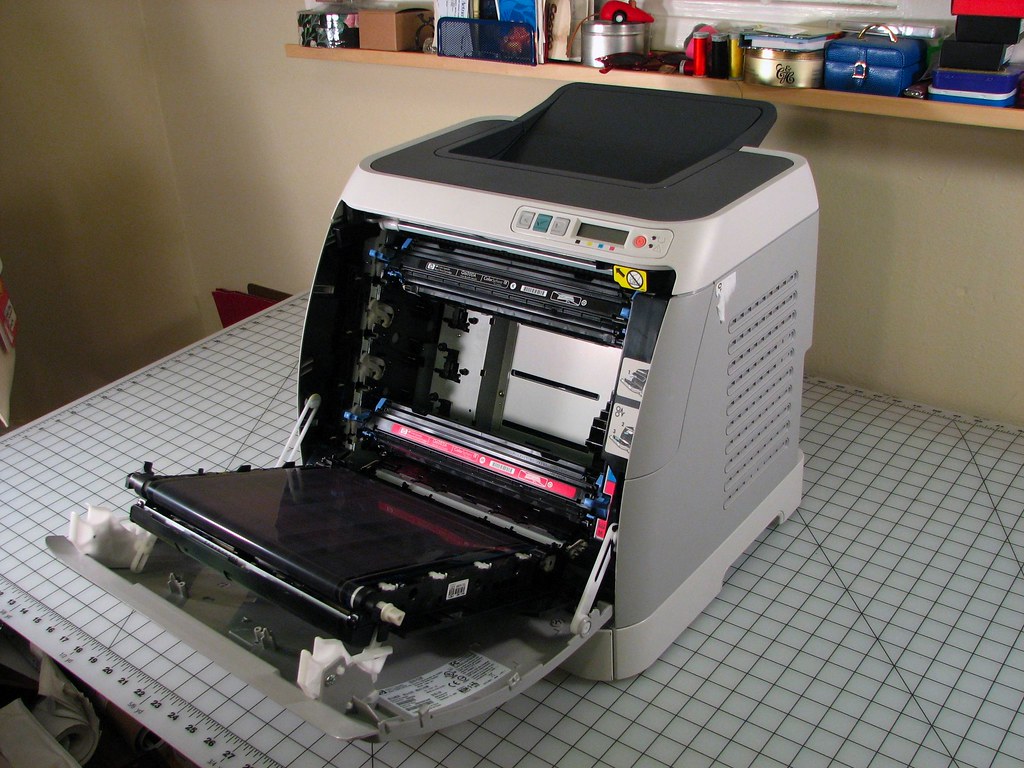
The Ultimate Guide to Laser Printers:
Nowadays printers become essential for everyone weather you are a student or you are a professional life . Among the different types of printers available, a printer stands out as a reliable and efficient choice. In this comprehensive guide, you’ll learn everything you need to know about laser printers, from how they work internally to choosing the right printer for your needs.
Table of Contents
Introduction
Laser printers have come a long way since their introduction. Because of their reliability and speed, they have become a staple in homes and offices. In this guide, we’ll delve into the world of laser printers and learn about their internal workings, benefits, types, and how to choose the best printer for your needs. Let’s start by understanding the basic technology of laser printers.
How Laser Printers Work
The Process of Printing
They use a fascinating process to transfer digital data onto paper. It all starts with the creation of an electrostatic image on a photosensitive drum. This image is then developed with toner, transferred onto paper, and fused using heat. The result is sharp, high-quality prints at impressive speeds.
Laser Printer Components
To achieve this remarkable process, these printers consist of several key components, including the photosensitive drum, toner cartridges, fuser unit, and more. Understanding these components is crucial to maintaining your printer effectively.
Advantages of Laser Printers
These printers have several advantages that make them a preferred choice for many users.
Speed and Efficiency
One of the standout features of these printers is their speed. They can produce pages in a matter of seconds, making them ideal for high-volume printing tasks.
High-Quality Output
These printers excel at producing crisp text and detailed graphics. Whether you need professional documents or vibrant marketing materials, these printers deliver exceptional quality.
Cost-Effective
While laser printers may have a higher upfront cost, their cost per page is lower compared to inkjet printers. This cost efficiency becomes evident over time, especially in busy office environments.
Types of Laser Printers
These printers come in two primary types: monochrome and color.
Monochrome Laser Printers
Monochrome laser printers are designed for black and white printing. They are perfect for offices that primarily produce text documents.
Color Laser Printers
If you require color printing for presentations, marketing materials, or creative projects, color laser printers offer high-quality color output.
Choosing the Right Laser Printer
Selecting the perfect laser printer involves considering various factors.
Consider Your Printing Needs
Assess whether you need a printer for occasional home use or heavy-duty office printing. Your printing volume and purpose will influence your choice.
Print Speed and Volume
Different models offer varying print speeds and monthly duty cycles. Ensure your chosen printer can handle your expected workload.
Budget Considerations
Set a budget and explore options within that range. Remember that long-term costs, such as toner replacement, should be factored in.
Additional Features
Some of these printers come with extra features like wireless connectivity, duplex printing, and mobile printing. Determine which features align with your requirements.
Setting Up Your Laser Printer
Now that you’ve chosen your printer, it’s time to set it up.
Unboxing and Assembly
Follow the manufacturer’s instructions to assemble your printer correctly.
Installing Toner Cartridges
Properly install the toner cartridges to ensure smooth printing.
Connecting to Your Computer
Establish a connection between your computer and printer for seamless printing.
Maintenance Tips for Laser Printers
To keep your printer in top shape, follow these maintenance tips.
Cleaning and Care
Regularly clean the printer and remove any debris or dust that may affect print quality.
Toner Replacement
Learn how to replace toner cartridges correctly to prevent print issues.
Troubleshooting Common Issues
Be prepared to troubleshoot common printer problems, such as paper jams or connectivity issues.
Security Considerations
In an age of digital threats, it’s essential to consider printer security.
Network Security
Protect your printer from unauthorized access by securing your network.
Document Privacy
Implement secure printing practices to safeguard sensitive documents.
Environmental Impact
Laser printers have made strides in reducing their environmental footprint.
Energy Efficiency
Look for Energy Star-certified printers to minimize energy consumption.
Recycling and Disposal
Dispose of old printers and toner cartridges responsibly through recycling programs.
Future Trends in Laser Printing
Stay ahead of the curve by exploring upcoming trends in laser printing, such as advancements in wireless technology and eco-friendly printing options.
Conclusion
Laser printers have revolutionized the way we print, offering speed, quality, and efficiency. By choosing the right printer and following maintenance and security practices, you can enjoy hassle-free printing for years to come.If you want to learn more about printer then visit this article.
FAQs
Are laser printers more cost-effective than inkjet printers in the long run?
These printers often have a lower cost per page, making them cost-effective for high-volume printing.
Can I use any type of paper in a laser printer?
Laser printers work best with laser-compatible paper, but they can handle a variety of paper types.
How do I clean the internal components of my laser printer?
Use a lint-free cloth and follow the manufacturer’s guidelines for cleaning.
What security measures should I take to protect my network-connected laser printer?
Implement strong passwords, enable encryption, and regularly update the printer’s firmware.
Is it possible to recycle old toner cartridges, and how can I do it?
Yes, many manufacturers offer recycling programs for toner cartridges. Check their websites or local recycling centers for detail.

